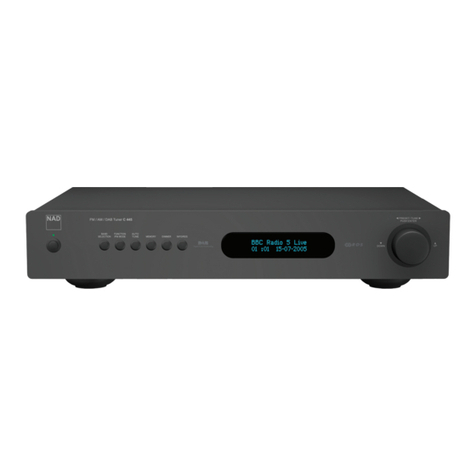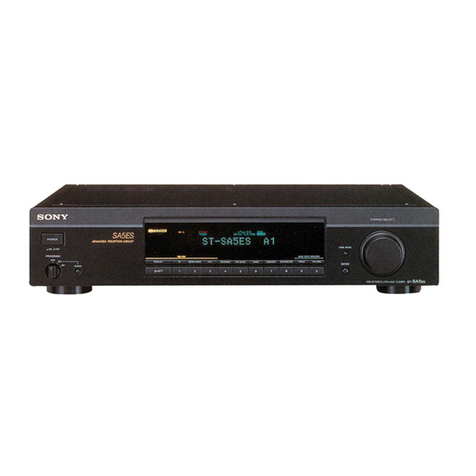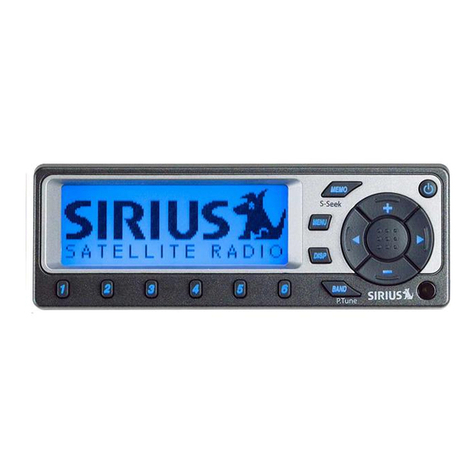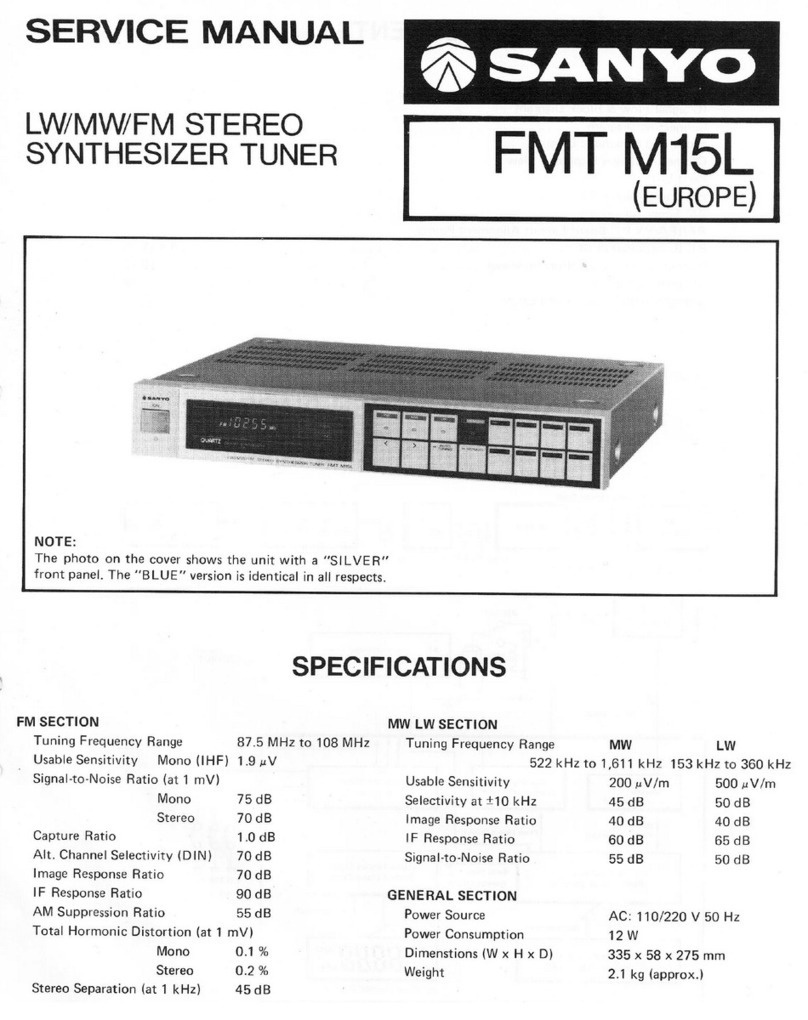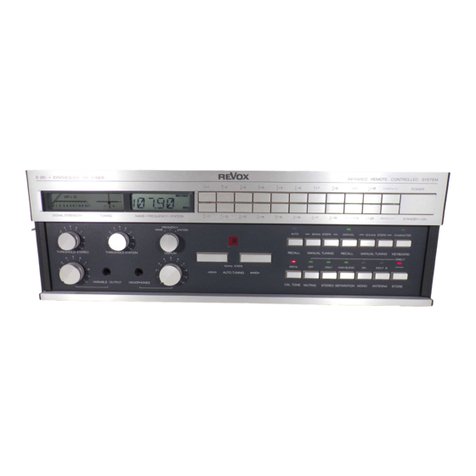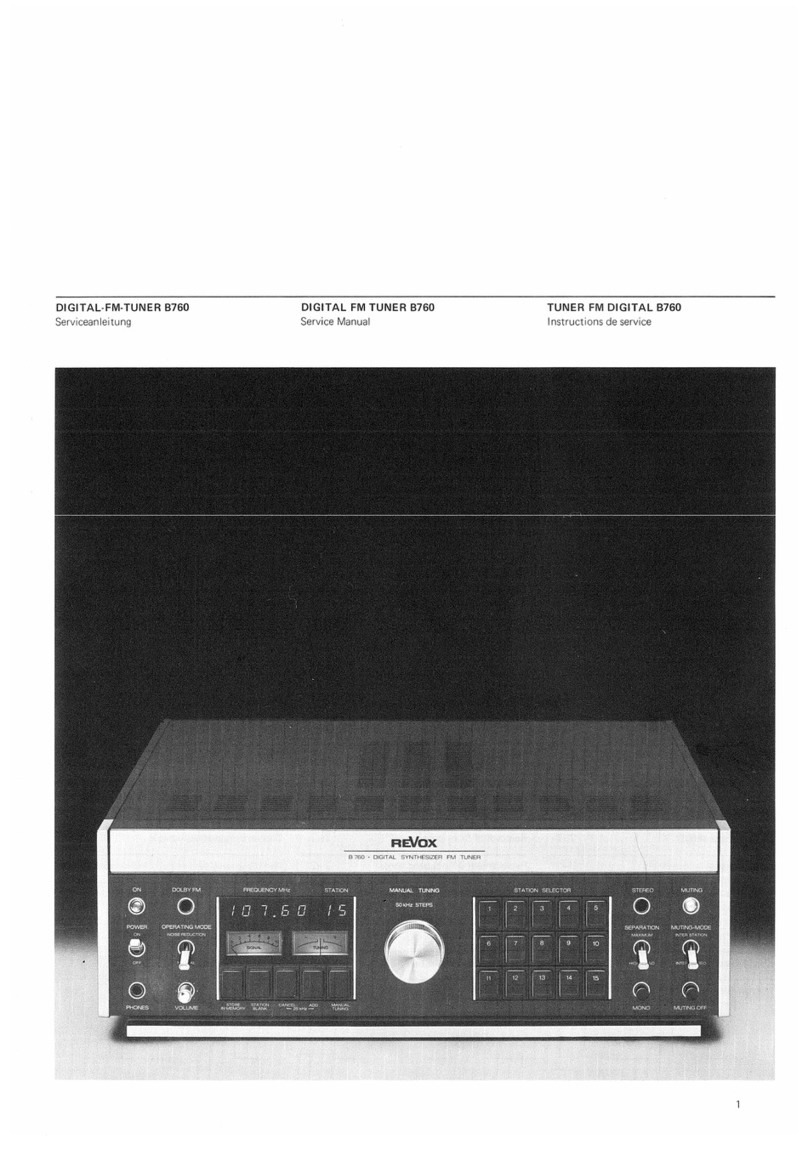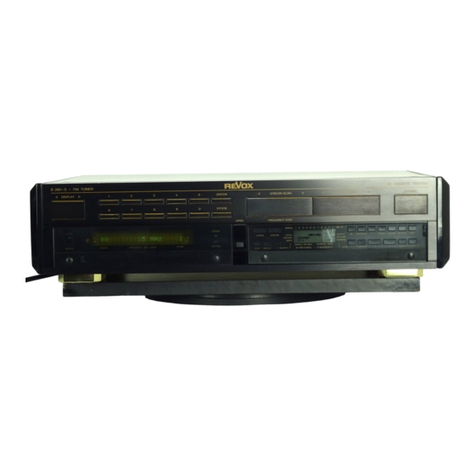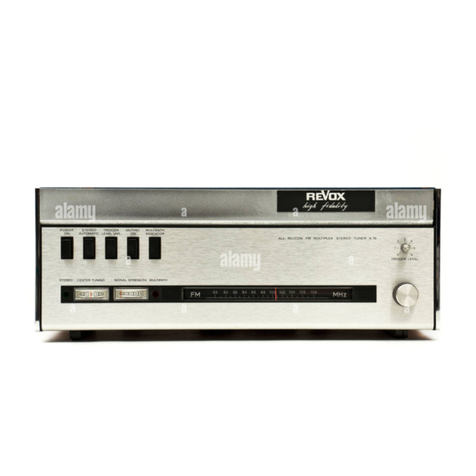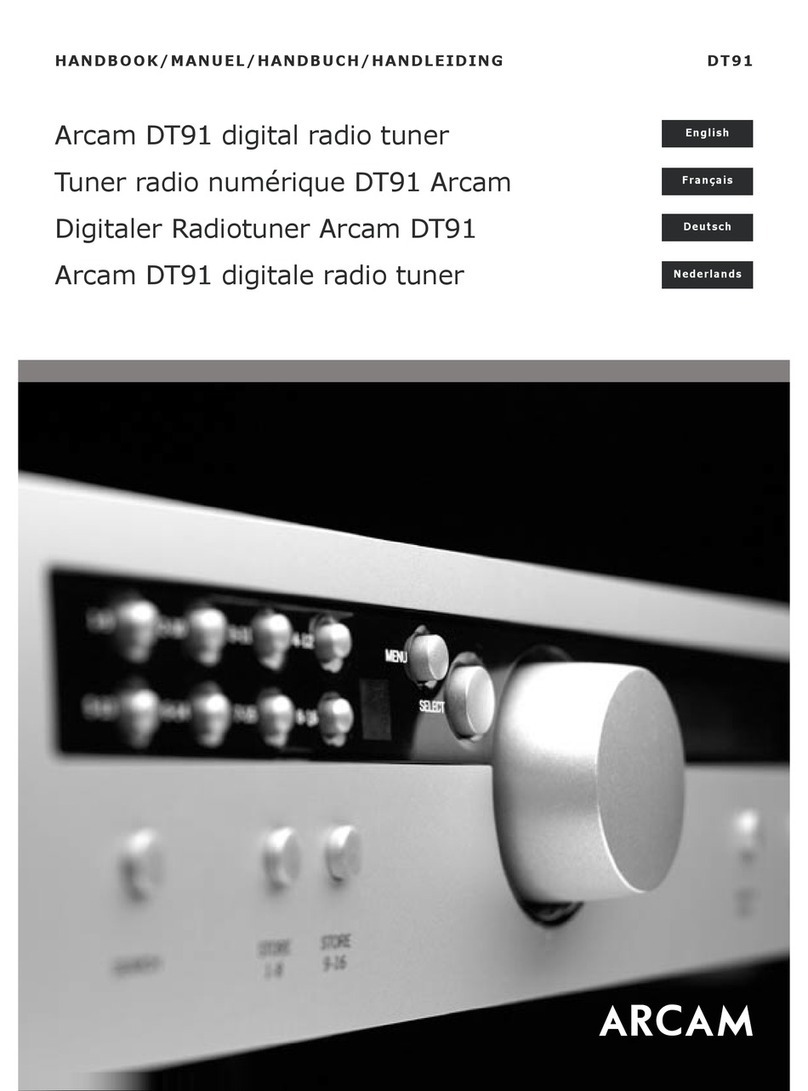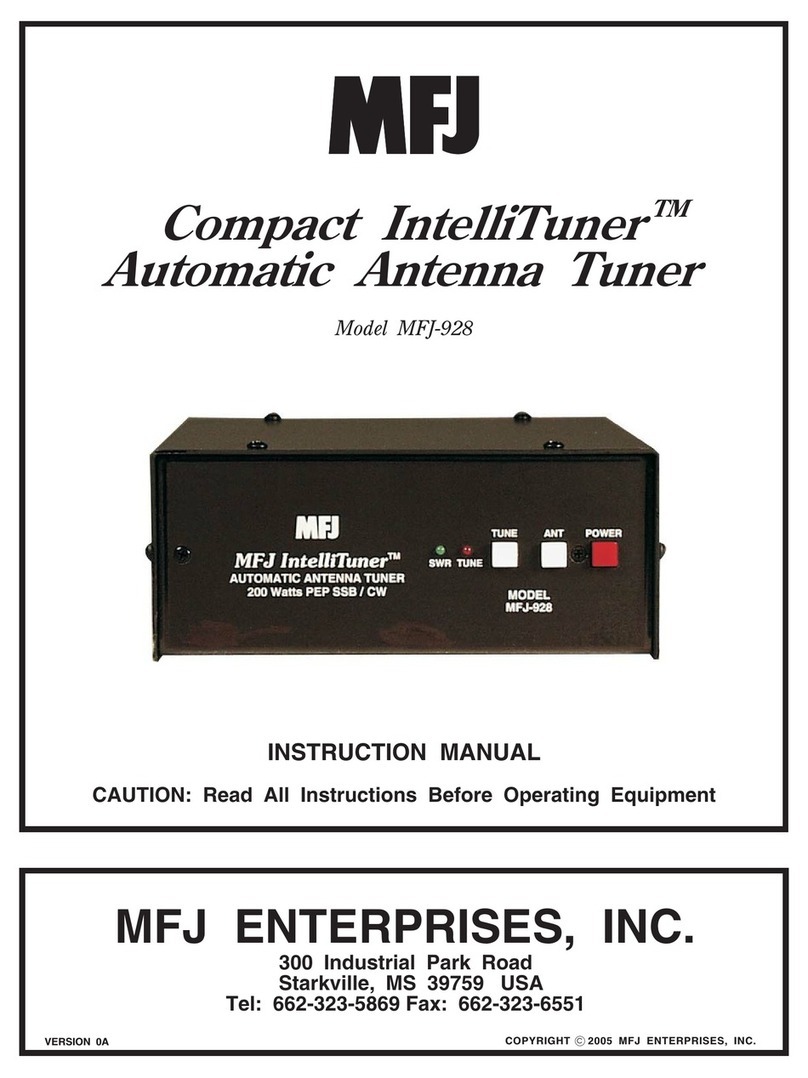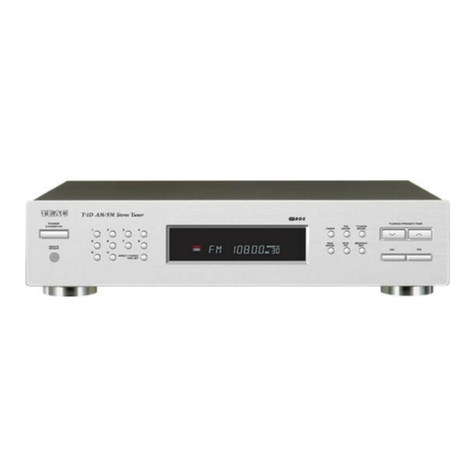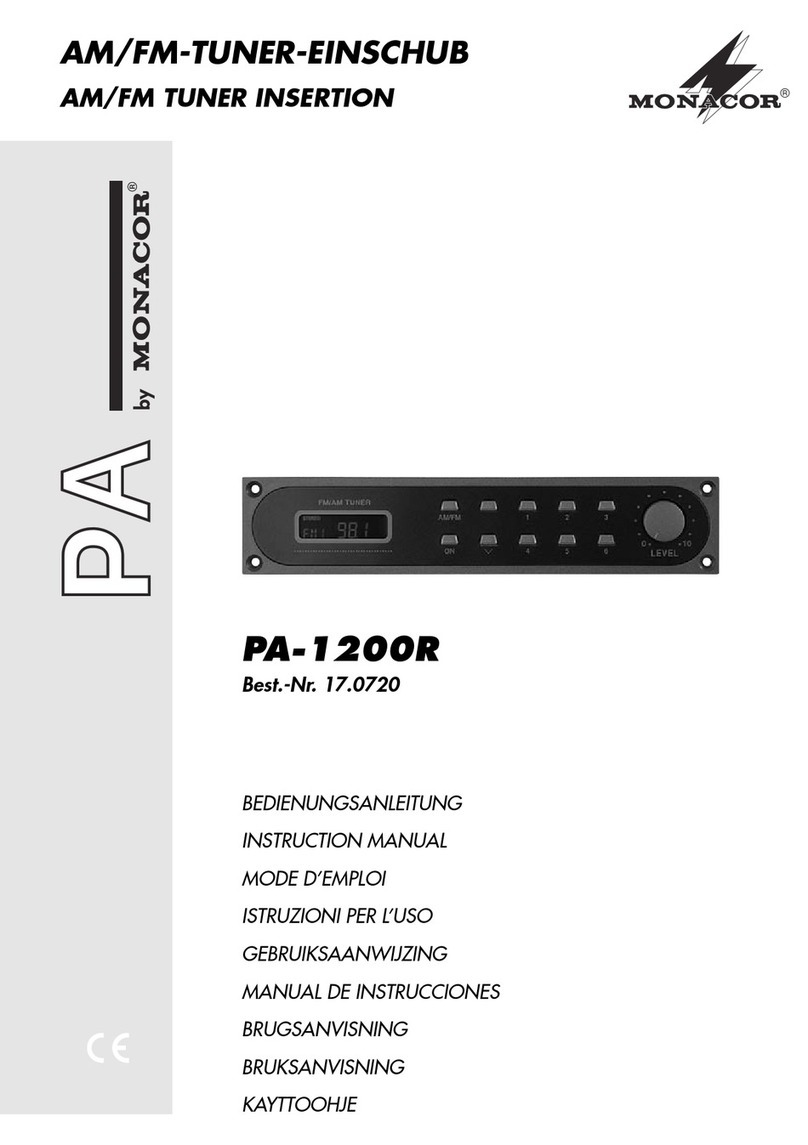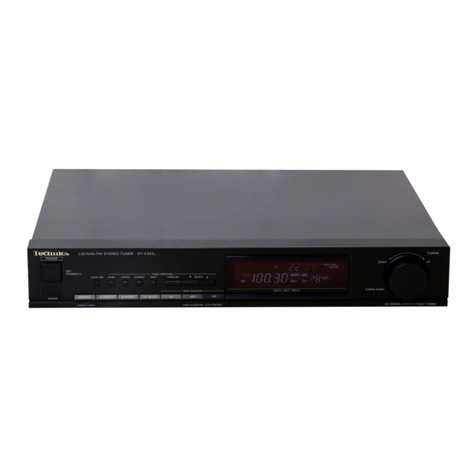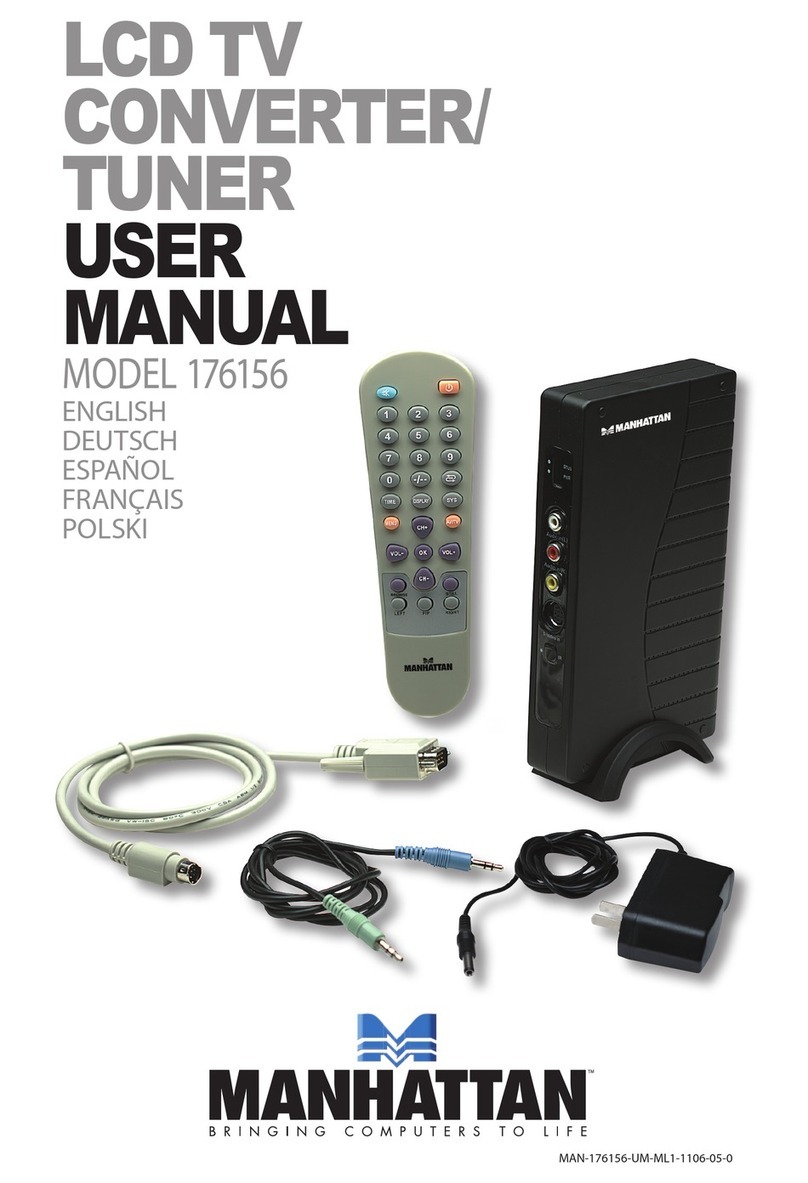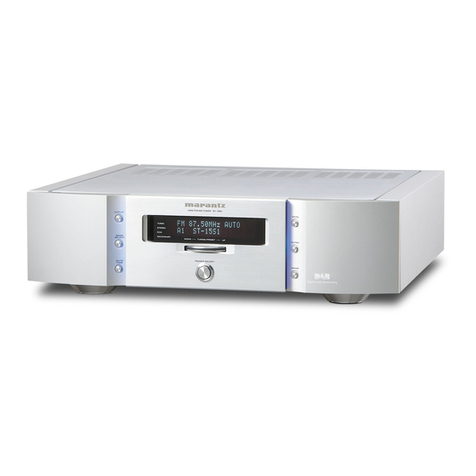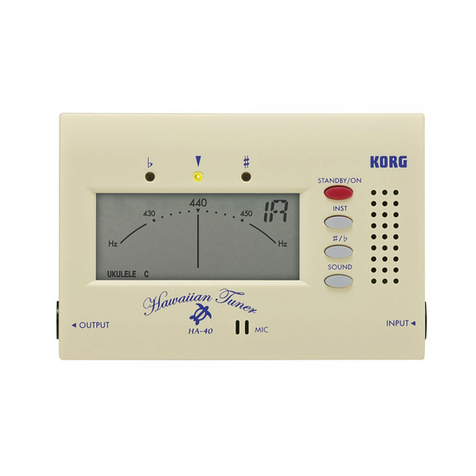
NF- Verzerrungen:
0,1 %
bei 1mV/60 Ohm, 1kHz und 40 kHz Hub,
Mono und Stereo L=R.
Stereo- Obersprechdampfung:
42 dB;
Schalter SEPARATION auf MAXIMUM
10 dB:
Schalter SEPARATION auf HIGH BLEND
bei 1mV/60 Ohm, 1kHz und 40 kHz Hub.
Gerauschabstands-Verbesserung bei 50 /uV/
60 Ohm (DIN 45405): 7dB.
Fremdspannungsabstand:
75dB
30 Hz ... 15 kHz linear, 1mV/60 Ohm bezogen
auf 75 kHz Hub.
PHotton- und HHfstragerdampfung:
(inkl. aller Oberwellen)
70dB
15 kHz ... 300 kHz linear, 1mV/60 Ohm be-
zogen auf 75 kHz Hub.
Umschaltschwelle INTER STATION:
1
,5
... 10 jLiV an 60 Ohm
einstellbar mit Regler INTER STATION
THRESHOLD
Umschaltschwelle INTER STEREO:
4... 60 pN an 60 Ohm
einstellbar mit Regler INTER STEREO
THRESHOLD
Antennen-Eingange
:
60 ... 75 Ohm, koaxial, nach Dl N45325
240 ... 300 Ohm, symmetrisch, nach Dl N4531
6
NF-Ausgange:
Festeingestellter Ausgang:
Rj =220 Ohm, R|_ min. 10 kOhm
Doppel-Cinchbuchse parallel mit Buchse nach
DIN 41524.
Ausgangsspannung 1,16 Vbei 400 Hz und
75 kHz Hub.
Regelbarer Ausgang:
Rj max. 1,5 kOhm, R[_ min. 10 kOhm
Doppel-Cinchbuchse, Ausgangspegel mit Regler
OUTPUT LEVEL einstellbar.
Ausgangsspannung 1,16 Vbei 400 Hz und
75 kHz Hub.
Kopfhdrer-Ausgang:
Rj =220 Ohm, Rp min. 8Ohm
Stereo Jack Buchse, Pegel mit Regler VOLUME
einstellbar.
Ausgangsspannung 8Vbei 400 Hz und 75 kHz
Hub.
Oszllloskop-Ausgang:
Doppelcinchbuchse,
vertikal (Y): 50 mV/60 Ohm HE =1V
horizontal (X): 75 kHz Hub =2,8 V^^
Total Harmonic Distortion:
0.1 %
with an input signal of 1mV/75 ohms, 1kHz
and 40 kHz deviation, mono and stereo L= R.
Stereo Crosstalk:
42 dB:
Switch SEPARATION in position MAXIMUM
10 dB:
Switch SEPARATION in position HIGH BLEND
with an input signal of 1mV/75 ohms, 1kHz
and 40 kHz deviation.
Improvement of signal to noise ratio with an
input signal of 50 juV/75 ohms (DIN 45405)
:
7dB.
Signal to Noise Ratio:
75dB
30 Hz ... 15 kHz linear, referred to 75 kHz de-
viation and an input signal of 1mV/75 ohms.
Pilot Signal and Subcarrier Suppression:
(including all harmonics)
70 dB
15kHz ... 300 kHz linear, referred to 75 kHz
deviation and an antenna input of 1mV/
75 ohms.
Trigger Threshold INTER STA TION:
1
.5
... 10juV on 75 ohms
adjustable with potentiometer INTER
STATION THRESHOLD.
Trigger Threshold INTER STEREO:
4... 60 p\/ on 75 ohms
adjustable with potentiometer INTER STEREO
THRESHOLD.
Antenna Inputs:
60 ... 75 ohms, coaxial, as per DIN 45325
240 ... 300 ohms, balanced, as per DIN 45316
Audio Outputs:
Fixed level output:
Rj =220 ohms, Rp min. 10 kohms
Double phono socket connected in parallel to
socket as per Dl N41 524.
Output voltage 1.16 Vat 400 Hz and 75 kHz
deviation.
Adjustable output:
Rj max. 1.5 kohms, R|_ min. 10 kohms.
Double phono socket, level adjustable with
potentiometer OUTPUT LEVEL.
Output voltage 1.16 Vat 400 Hz and 75 kHz
deviation.
Headphone Output:
Rj =220 ohms, R|_ min. 8ohms
Stereo jack, level adjustable with potentiometer
VOLUME.
Output voltage 8Vat 400 Hz and 75 kHz de-
viation.
Oscilloscope output:
Double phono socket,
vertical (Y): 50 mV/75 ohms HF =1V
horizontal (X): 75 kHz deviation ^2.8 Vpp
Distorsion BF:
0,1 %
a1mV/60 ohms, 1kHz avec 40 kHz d'excur-
sion, mono et stereo G=D.
Amortissement de diaphonie stereo:
42 dB:
Commutateur SEPARATION sur MAXIMUM
lOdB:
Commutateur SEPARATION sur HIGH BLEND
a1mV/60 ohms, 1kHz avec 40 kHz d'ex-
cursion.
Amelioration du rapport signal/bruit a50 /iV/
60 ohms (DIN 45405): 7 dB.
Recu! du bruit de fond:
75dB
30 Hz ... 15kHz Ifneaire, a1mV/60 ohms avec
75 kHz d'excursion.
Rejection du signal pilote et de la sous-porteuse:
(avec toutes les harmoniques)
70 dB
15kHz ... 300 kHz lineaire, a1mV/60 ohms
avec 75 kHz d'excursion.
SeuH de commutation INTER STA TION:
1
,5
... 10juV a60 ohms
reglableavec INTER STATION THRESHOLD
SeuH de commutation INTER STEREO:
4... 60 p\/ a60 ohms
reglableavec INTER STEREO THRESHOLD
Entrees d'antenne:
60 ... 75 ohmis, coaxiale d'apres DIN 45325
240 ... 300 ohms, symetrique d'apres DIN 4531
6
Sorties BF:
Sortie aniveau fixe;
Rj =220 ohms, Rp 10kohms
double prise CINCH parallele ala prise DIN
41 524.
1,16 Vde tension de sortie a400 Hz avec
75 kHz d'excursion.
Sortie reglable:
Rj "" 1,5 kohms max., Rp10kohms min.
double prise CINCH, niveau de sortie reglable
avec OUTPUT LEVEL.
1,16 Vde tension de sortie a400 Hz avec
75 kHz d'excursion.
Sortie casque:
Rj =220 ohms, Rp 8ohms min.
Prise Jack stereo, niveau reglable avec
VOLUME.
8Vde tension de sortie a400 Hz avec 75 kHz
d'excursion.
Sortie oscilloscope:
double prise Cl NCH,
vertical (Y); 50 mV/60 ohms HF -1V
horizontal (X); 75 kHz d'excursion =2,8 Vpp
1-5
